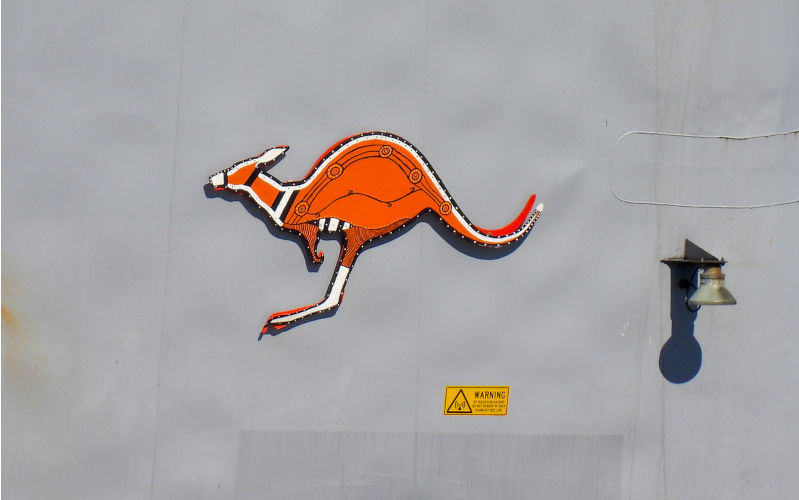It's a huge policy failure that Australia can't defend itself
March 15, 2024
Not unexpectedly, the AUKUS nuclear-powered submarine project has run into reality as Virginia class production slows down, leaving Australia with no Defence policy. A huge strategic failure, if endorsed government assessments are believed, which has left Australia vulnerable and dependent on America.
The 2000 White Papers highest priority was to be able to defend Australia without relying on the combat forces of other countries. The 2009 White Paper warned Pronounced military modernisation in the Asia-Pacific region is having significant implications for our strategic outlook. The 2020 Defence Strategic Update abandoned the ten-year strategic warning time for a major conventional attack against Australia as no longer an appropriate basis for defence planning. Clear parameters.
Disturbingly, the 2023 Review found that the ADF is not fully fit for purpose; a damning indictment of past policy. The Review stated that More countries are able to project combat power across greater ranges, including against our trade and supply routes, which are vital for Australias economic prosperity and issued an urgent call to action, including higher levels of military preparedness and accelerated capability development.
In a frank admission, though, the Review states that In the present strategic circumstances, this can only be achieved by Australia working with the United States and other key partners. That is, despite the collapse of warning time and the mounting threat, over two decades Australia has failed to respond to the need for an independent defence force. The level of urgency the government has identified hasnt produced adequate action.
Making the ADF fit for purpose and independent relies on two connected major force structure decisions; the AUKUS nuclear-powered submarine acquisition and the Enhanced Lethality Surface Combatant Fleet (ELSCF ) proposal. The ELSCF programme apparently complements a conventionally armed, nuclear-powered submarine capability.
The ELSCF report recommends an armada of Aegis ships with the latest system upgrade. This would in fact constitute a very capable missile defence system, when available, that could very effectively defend Australian cities and infrastructure from missile and other attacks.
The three Hobart class destroyers will be urgently upgraded with the latest Aegis Combat System Baseline 9 capabilities, including ballistic missile defence (BMD), over the next decade. If the 2020 Force Structure Plan is a guide, this upgrade will have significant implications for the availability of the destroyers until the mid-to-late 2030s. The six Hunter class frigates recommended by the ELSCF will also be equipped with the latest Aegis system. The first Hunter class is anticipated to be commissioned in 2032-3, all going to schedule.
Therefore, there will be few Aegis capable ships available until nearly 2040. Command and control of the six Large Optionally Crewed Surface Vessels (LOSV) recommended by the ELSCF will rely on Aegis Baseline 9 or later aboard the Hunter class frigates and the Hobart class. Likely Hobart and Hunter availability indicates the LOSVs will sit idle for a decade or more, unless handed to the USN to operate in the interim.
The first AUKUS nuclear-powered SSN to be built jointly by the UK and Australia is planned to enter service around the early 2040s, with five of the eight SSN-AUKUS submarines being delivered by the middle of the 2050s, and the final three in the 2060s. The three Virginia class SSNs are planned to be acquired sequentially in 2032, 2035, and 2038, if the project goes ahead.
The announced slowdown in US submarine production will inevitably push this timing out. The Collins class submarines will undertake a life-of-type-extension (LOTE) from 2026 to keep them operating in the mid-2040s. If the used Virginia class purchase falls through or is delayed by two or three years Australia will not have an effective capability for defending the the strategic approaches to Australia, or an effective submarine force, for the next twenty years. There is no alternative plan for Australias independent defence.
Between 2024 and the late-2030s/early 2040s, on any day, Australia will be defended by the ageing Collins class submarines that arent in the LOTE or a maintenance programme (a maximum of 5 but probably 3 at best), the ageing ANZACs that arent being upgraded or serviced (maximum of 5 but probably 3 at best), and the Hobart destroyers not being upgraded or otherwise unavailable for deployment (maybe 1 or 2).
Of course, if all goes to plan, by the late-2040s Australia could be operating a formidable naval force of nine Aegis equipped combatants plus eleven capable general purpose frigates, and perhaps a Virginia class submarine. Lets assume Defence is capable of managing this enormous procurement workload and everything is delivered on time. Between now and 2040, as the Review states, Australia will be reliant on America for its defence.
This constitutes an astounding and inexcusable failure of defence policy that has left Australia undefended and Australias sovereignty in the care of others.
Reliance on the US in the absence of a national capability means Australias sovereignty is deeply compromised. The unwillingness of America to directly confront a nuclear armed adversary alone should disturb Australian policymakers given the number of nuclear-weapons armed states in the Indo-Pacific.
In addition, the price for possible American defence assistance is the transformation Australia into an American depot and a target, and the consequential surrender of the war decision to Washington. Thats without addressing the prospect of an increasingly isolationist America beyond 2025.
It is not necessary to see China as a threat to believe its prudent for Australia to have an independent defence capability. The ability to enforce Australian sovereignty over its maritime reaches and to defend its approaches is a key national responsibility. Australians deserve the benefits of security. Reassuring announcements and reviews wont deliver that.
Now the AUKUS submarines are in doubt. Australia cannot defend itself. When it will be able to remains uncertain. Its a scandal.

